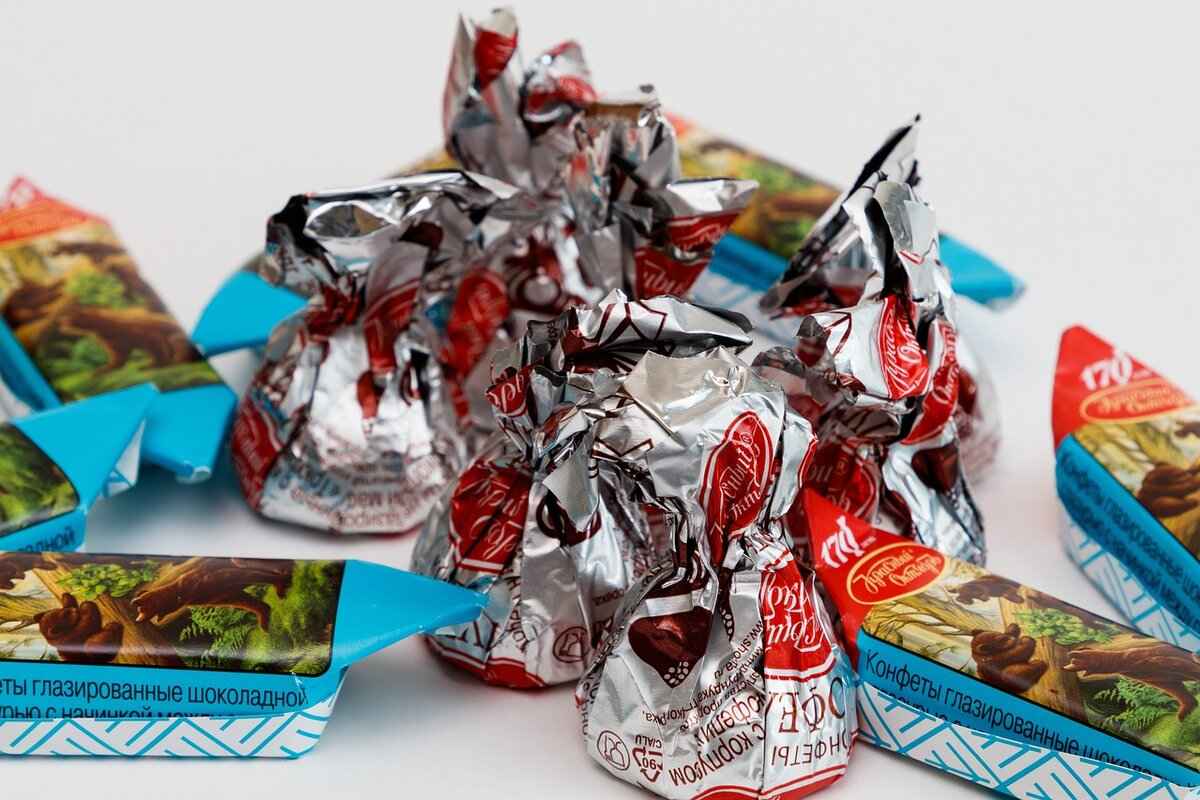Edible gold and silver have fascinated culinary enthusiasts for centuries, especially in the realm of Asian desserts. These luxurious ingredients not only enhance the visual appeal of various sweets but also carry deep cultural significance. This article delves into the intricate relationship between edible metals and traditional desserts, exploring their historical roots, health implications, and the delicate balance between tradition and modern luxury.
Edible gold and silver are crafted from pure metals, specifically designed for consumption. Unlike standard metals, these variants are processed to ensure they are safe for human consumption, having been used in culinary traditions for centuries across various cultures. Their non-toxic nature makes them a unique addition to desserts, providing both a visual and taste experience.
Edible gold and silver serve multiple purposes in desserts. Firstly, they significantly enhance the visual appeal of dishes, making them more attractive to consumers. Secondly, they symbolize wealth, prosperity, and celebration in many cultures, often being used during significant events such as weddings, festivals, and religious ceremonies.
The use of edible gold and silver in Asian cultures dates back centuries. Historically, these metals were reserved for royal feasts and important religious ceremonies, symbolizing luxury and divine favor. Their presence in desserts was a way to showcase wealth and status, making them a staple in celebratory meals.
Across Asia, different countries have unique traditions regarding the use of edible metals. For instance:
- India: Edible gold leaf is often used on sweets like barfi and gulab jamun.
- China: Edible gold is commonly found in mooncakes during the Mid-Autumn Festival.
- Japan: Gold flakes are used in wagashi, traditional Japanese sweets.
Each region showcases its cultural heritage through the luxurious incorporation of these ingredients.
In contemporary culinary practices, chefs are experimenting with edible gold and silver, pushing the boundaries of traditional recipes. This fusion of old and new reflects evolving consumer preferences, where luxury meets creativity. Chefs are now incorporating these metals into desserts like gold-dusted macarons and silver-infused chocolates, appealing to a modern audience.
While edible gold and silver are generally recognized as safe, it is essential to consider certain factors regarding their consumption. Understanding the potential health implications is vital for informed choices. Most health experts agree that these metals do not pose any significant health risks when consumed in moderation.
The health benefits of consuming edible metals are minimal, often overshadowed by their aesthetic appeal. However, it is crucial to distinguish between myths and facts regarding their safety. Some misconceptions suggest that these metals provide health benefits, but scientific evidence supporting such claims is lacking. Instead, the focus should be on their role in enhancing the visual and celebratory aspects of desserts.
Incorporating edible gold and silver into desserts requires creativity and technique. Here are some practical tips for home bakers and professional chefs:
- Experiment with Techniques: Use edible gold leaf to decorate cakes or pastries for a luxurious touch.
- Pairing Flavors: Combine these metals with rich flavors like chocolate or fruit to enhance the overall taste experience.
- Presentation: Ensure that the presentation of desserts highlights the use of edible metals, making them the centerpiece of any occasion.
From luxurious cakes to exquisite pastries, there are numerous ways to use edible gold and silver. Consider creating golden tiramisu or silver-dusted panna cotta to elevate traditional desserts to new heights. These innovative recipes not only delight the palate but also impress visually, ensuring a memorable dining experience.
When using edible metals, presentation is key. Employ effective techniques to showcase these luxurious ingredients, ensuring that desserts are not only delicious but also visually stunning. Utilize contrasting colors and textures to highlight the shimmer of gold and silver, making each dessert a work of art.

What is Edible Gold and Silver?
Edible gold and silver have fascinated culinary enthusiasts and chefs alike for centuries. These luxurious materials are not only visually striking but also carry a rich history and cultural significance. In this section, we will delve into the definition and composition of edible gold and silver, highlighting their safety for consumption and their longstanding presence in culinary traditions.
Understanding the nature of edible gold and silver is essential for anyone interested in the culinary arts. Edible gold is typically 22 to 24 karats, ensuring that it is free from harmful additives and safe for human consumption. Edible silver, on the other hand, is often used in a similar form, usually as a fine powder or leaf. Both materials are chemically inert, meaning they do not react with food or the human body, making them safe to eat.
These precious metals have been utilized in various culinary applications for centuries, particularly in Asia. From lavish wedding cakes to traditional sweets, edible gold and silver have become synonymous with celebration and luxury. Their shimmering presence not only enhances the aesthetic appeal of desserts but also symbolizes prosperity, wealth, and divine favor in many cultures.
The use of edible gold and silver in desserts serves both aesthetic and symbolic purposes. Visually, these metals add a touch of elegance and sophistication, transforming ordinary dishes into extraordinary culinary masterpieces. Symbolically, they convey a sense of celebration, often reserved for special occasions such as weddings, religious ceremonies, and festivals.
The historical roots of edible gold and silver reveal their longstanding importance in Asian cultures. For centuries, these metals have graced royal feasts and religious rituals, representing luxury and divine favor. In India, for example, sweets adorned with edible gold are common during festivals, while in China, mooncakes filled with rich ingredients often feature a touch of silver to signify good luck.
While the allure of edible gold and silver is undeniable, many may wonder about their safety. Edible gold and silver are generally recognized as safe for consumption. They are non-toxic and have been approved for use in food by various regulatory bodies worldwide. However, it is crucial to understand the potential health implications and to consume these metals in moderation.
Incorporating edible gold and silver into desserts requires both creativity and technique. Here are some practical tips for home bakers and professional chefs:
- Choose Quality Materials: Always source edible gold and silver from reputable suppliers to ensure purity and safety.
- Presentation Matters: Use these metals sparingly to enhance the visual appeal without overwhelming the dish.
- Experiment with Flavors: Pair edible metals with rich flavors such as chocolate or fruit to create a balanced dessert.
From luxurious cakes to exquisite pastries, the possibilities are endless. Explore innovative recipes that elevate traditional desserts to new heights, ensuring that your creations are not only delicious but also visually stunning.

Why Are Edible Metals Used in Desserts?
Edible metals, specifically gold and silver, have been captivating the culinary world for centuries, particularly in the realm of desserts. Their usage transcends mere decoration; it embodies a rich tapestry of cultural significance, luxury, and tradition. In this article, we delve into the reasons behind the incorporation of these opulent elements in desserts.
Edible metals are not just visually appealing; they also carry a wealth of symbolism. Across various cultures, the presence of gold and silver in desserts signifies wealth, prosperity, and celebration. For instance, in many Asian traditions, desserts adorned with these metals are often served during special occasions like weddings and festivals, highlighting their importance in marking significant life events.
One of the primary reasons chefs and bakers choose to incorporate edible gold and silver into desserts is their ability to enhance visual appeal. The shimmering quality of these metals adds a touch of elegance and luxury, transforming a simple dessert into a masterpiece. Whether it’s a lavish wedding cake or a delicate pastry, the addition of gold or silver leaf can elevate the overall presentation, making it more enticing to guests.
In many cultures, desserts that feature edible metals are not just treats; they are laden with cultural significance. For example, in India, sweets adorned with gold leaf are often exchanged during festivals and weddings as a token of good fortune and blessings. Similarly, in Chinese culture, mooncakes decorated with silver are traditionally gifted during the Mid-Autumn Festival, symbolizing unity and prosperity.
While the aesthetic and symbolic benefits of edible gold and silver are widely recognized, consumers often wonder about their health implications. It is important to note that both gold and silver are considered safe for consumption in small quantities. They are non-toxic and pass through the digestive system without being absorbed. However, it’s crucial to ensure that the metals used are of food-grade quality, as not all metals are safe for ingestion.
In contemporary culinary practices, the use of edible metals has evolved. Chefs are now experimenting with these luxurious ingredients, integrating them into innovative dessert recipes that blend traditional techniques with modern flavors. This fusion reflects changing consumer preferences, where the demand for unique and visually stunning desserts is on the rise.
- Start Small: When using edible metals, a little goes a long way. Begin with small pieces or flakes to avoid overwhelming the dessert.
- Pair with Complementary Flavors: Choose flavors that enhance the experience, such as rich chocolate or fruity accents, to balance the luxury of the metals.
- Focus on Presentation: Utilize plating techniques that highlight the metallic sheen, ensuring that the dessert is as visually appealing as it is delicious.
In summary, the use of edible gold and silver in desserts is a fascinating blend of tradition, symbolism, and innovation. As culinary artists continue to explore the boundaries of dessert-making, these luxurious ingredients will undoubtedly remain a staple in both traditional and modern recipes, captivating the hearts and palates of many.
Historical Significance of Edible Metals
The use of edible metals, particularly gold and silver, has a rich and fascinating history in various Asian cultures. These precious materials have transcended mere culinary applications, becoming symbols of luxury, status, and divine favor. Their historical significance is deeply rooted in the traditions of many Asian societies, where they have been used in a variety of ceremonial and celebratory contexts.
For centuries, edible gold and silver have been integral to royal feasts, religious ceremonies, and significant cultural events. In ancient times, serving dishes adorned with gold and silver was a way for the elite to display their wealth and power. These metals were often believed to possess magical properties, enhancing the spiritual significance of the meals served.
In many Asian religions, the use of edible gold and silver is prevalent during rituals and offerings. For instance, in Hinduism, gold is often used in offerings to deities, symbolizing purity and divinity. Similarly, in Buddhism, gold leaf is applied to statues and sacred texts, representing the transcendental nature of enlightenment.
Throughout history, royal families in Asia have incorporated edible gold and silver into their banquets. These metals not only enhanced the visual appeal of the dishes but also served as a testament to the host’s wealth. Celebrations such as weddings and festivals often feature desserts adorned with these luxurious ingredients, signifying blessings and good fortune for the couple or the community.
Different Asian countries have unique traditions surrounding the use of edible metals. In India, sweets like gulab jamun and barfi are often garnished with edible silver leaves, adding an extravagant touch to the festivities. In China, mooncakes are traditionally decorated with gold and silver, especially during the Mid-Autumn Festival, symbolizing reunion and harmony.
As culinary practices evolve, chefs are finding innovative ways to incorporate edible gold and silver into modern desserts. This fusion of traditional and contemporary techniques not only preserves cultural heritage but also caters to the evolving tastes of consumers. Today, edible metals are used in high-end desserts, from luxurious cakes to artisanal chocolates, appealing to a clientele seeking both luxury and experience.
Edible metals carry significant cultural symbolism beyond their aesthetic appeal. They are often seen as a representation of prosperity and success. In many Asian cultures, the presence of gold and silver in desserts is believed to bring good luck and positive energy, making them a popular choice for significant life events.
The historical significance of edible gold and silver in Asian cultures illustrates their longstanding importance and multifaceted roles. From religious ceremonies to royal feasts and modern culinary creations, these precious metals continue to be cherished for their symbolism, beauty, and ability to elevate the dining experience. As traditions evolve, the use of edible metals remains a testament to cultural heritage and the enduring allure of luxury in culinary arts.
Regional Variations in Usage
Edible metals, particularly gold and silver, are not merely luxurious ingredients; they are steeped in history and cultural significance across various Asian nations. Each country has its own unique traditions that incorporate these shimmering elements into desserts, reflecting their rich cultural heritage and artistic expression.
In India, the use of edible gold and silver is prominent during festive occasions and weddings. Traditional sweets such as gulab jamun and barfi are often adorned with a delicate layer of edible silver leaf, known as vark. This practice not only enhances the visual appeal but also signifies wealth and prosperity. The intricate designs made with these metals symbolize blessings and good fortune for the recipients.
Chinese culture also embraces edible metals, particularly during the Mid-Autumn Festival. Mooncakes, a traditional dessert, are frequently decorated with edible gold and silver to symbolize the moon’s brightness and the prosperity of families. The use of these metals is not just for aesthetics; it represents the hope for a fruitful year ahead and the unity of families during this festive season.
In Japan, the use of edible gold is often seen in wagashi, traditional Japanese confections. These sweets are crafted with precision and are often embellished with gold flakes to enhance their beauty. The Japanese value kawaii (cuteness) and presentation, making the addition of gold a way to elevate these delicate treats to an art form, symbolizing purity and elegance.
Thai desserts, such as golden threads (or fai thong), are also adorned with edible gold. These sweets are often prepared during significant celebrations, including the Thai New Year. The use of gold in these desserts symbolizes wealth and is believed to bring good luck to those who partake in them. The vibrant colors and intricate designs reflect the country’s artistic heritage, making each dish a visual delight.
While primarily associated with Asian cultures, the influence of edible metals extends to the Middle East, where desserts like baklava are sometimes garnished with edible gold. This fusion showcases the interconnectedness of culinary traditions across regions, highlighting how cultures have influenced one another over time.
Today, chefs across Asia are experimenting with edible metals, incorporating them into contemporary desserts that blend traditional recipes with modern aesthetics. This culinary renaissance not only preserves cultural practices but also introduces them to new audiences. From luxurious cakes to avant-garde pastries, the use of edible gold and silver is evolving, reflecting changing consumer preferences and tastes.
As the culinary world continues to embrace these shimmering ingredients, the balance between tradition and modernity becomes more pronounced. Edible metals serve as a bridge connecting generations, allowing people to celebrate their heritage while enjoying innovative culinary experiences.
Modern Trends in Edible Metal Usage
In recent years, the use of edible gold and silver in culinary arts has gained significant traction, particularly in the realm of desserts. Chefs and home bakers alike are embracing these luxurious ingredients, integrating them into traditional recipes while also exploring innovative combinations. This trend not only enhances the aesthetic appeal of dishes but also reflects a deeper cultural significance and evolving consumer preferences.
The resurgence of edible metals in desserts can be attributed to several factors. First and foremost, there is a growing desire among consumers for unique and visually stunning food experiences. Social media platforms like Instagram and Pinterest have played a pivotal role in this trend, with visually appealing desserts often going viral. As a result, chefs are motivated to create desserts that are not only delicious but also Instagram-worthy.
- Innovative Pairings: Chefs are experimenting with various flavor profiles, pairing edible metals with unexpected ingredients such as spicy chocolate or exotic fruits.
- Fusion Desserts: By blending traditional Asian sweets with modern techniques, chefs are creating fusion desserts that celebrate cultural heritage while appealing to contemporary tastes.
- Signature Dishes: Many high-end restaurants are now featuring desserts adorned with edible gold and silver as part of their signature offerings, elevating the dining experience.
Edible gold and silver have long been associated with wealth and prosperity in various cultures. In modern celebrations, these metals continue to symbolize good fortune and are often used in desserts during weddings, birthdays, and festivals. This cultural significance is being preserved even as culinary practices evolve. For instance, traditional Chinese mooncakes and Indian sweets are now often embellished with edible metals, bridging the gap between tradition and modern luxury.
While edible gold and silver are generally considered safe for consumption, it is essential for consumers to be informed about their health implications. The metals are non-toxic and pass through the digestive system without being absorbed. However, it is crucial to ensure that the products used are of high quality and comply with regulatory standards.
As the culinary landscape continues to evolve, the use of edible gold and silver is expected to grow. Chefs are likely to explore new ways to incorporate these metals into desserts, perhaps even experimenting with edible copper or platinum in the future. Additionally, as sustainability becomes a more pressing concern, there may be a shift towards sourcing these metals ethically, ensuring that their use aligns with eco-friendly practices.
For those looking to incorporate edible metals into their own baking, there are several practical tips to consider:
- Start Small: Begin by using edible gold or silver leaf to accentuate simple desserts like cupcakes or cookies.
- Focus on Presentation: The way desserts are presented can significantly impact their appeal. Use elegant plating techniques to showcase the metallic elements.
- Experiment with Flavors: Don’t shy away from pairing edible metals with bold flavors to create a unique culinary experience.
In summary, the contemporary use of edible gold and silver in desserts reflects a blend of tradition and modernity. As chefs continue to innovate and consumers seek out unique experiences, these luxurious ingredients will likely remain a staple in the culinary world, bridging the gap between age-old practices and modern gastronomy.
Cultural Significance in Celebrations
The cultural significance of edible gold and silver in celebrations is deeply rooted in tradition and symbolism. These precious metals are not merely decorative elements in desserts; they carry profound meanings that resonate with various cultures, particularly in Asia. Their use in significant life events, such as weddings and festivals, adds a layer of luxury and importance to the occasion.
In many Asian cultures, edible gold and silver are seen as symbols of prosperity and good fortune. The shimmering appearance of these metals in desserts not only enhances their visual appeal but also conveys a message of wealth and abundance. During weddings, for instance, desserts adorned with edible gold and silver are believed to bless the couple with a prosperous future together. This practice is not limited to weddings; it extends to various festivals where sharing these luxurious treats signifies goodwill and blessings among family and friends.
- India: In Indian culture, sweets like gulab jamun and barfi are often garnished with edible silver leaf, known as varak. This tradition is especially prevalent during weddings and religious ceremonies, where the presence of these sweets symbolizes divine blessings.
- China: Chinese mooncakes, traditionally consumed during the Mid-Autumn Festival, may be decorated with edible gold to signify wealth and prosperity. The use of these metals during such celebrations reflects the importance of family unity and abundance.
- Japan: In Japan, edible gold is often used in traditional sweets like wagashi, particularly during New Year celebrations. The gold leaf not only enhances the aesthetic appeal but also represents purity and the hope for a prosperous year ahead.
As culinary arts evolve, chefs are increasingly experimenting with edible gold and silver to create innovative desserts that blend tradition with modern aesthetics. The fusion of these precious metals with contemporary flavors and presentations has led to the emergence of luxurious desserts that cater to a new generation of consumers. For instance, gold-dusted cupcakes and silver-infused macarons have become popular choices for upscale events, showcasing how traditional elements can be reimagined in exciting ways.
While the aesthetic appeal of edible gold and silver is undeniable, many people wonder about their safety. Generally recognized as safe for consumption, these metals are non-toxic and pass through the digestive system without being absorbed. However, it is important to source these products from reputable suppliers to ensure they meet health regulations. Understanding the safety standards associated with edible metals can help consumers make informed choices.
Incorporating edible gold and silver into your own celebrations can elevate the experience. Here are some practical tips:
- Choose the Right Desserts: Select desserts that can complement the luxurious nature of edible metals. Cakes, pastries, and chocolates are excellent choices.
- Presentation Matters: Use these metals sparingly to create a stunning visual impact. A few flecks of gold or silver can transform an ordinary dessert into a work of art.
- Pair with Meaning: When serving desserts adorned with edible metals, share the cultural significance behind the practice to enhance the overall experience for your guests.
In conclusion, the use of edible gold and silver in celebrations is a beautiful blend of tradition, symbolism, and modern culinary innovation. Their presence in desserts not only adds a touch of luxury but also conveys heartfelt wishes for prosperity and happiness. Whether at weddings, festivals, or personal milestones, these precious metals continue to play a vital role in enriching our cultural celebrations.

Are Edible Metals Safe to Consume?
As culinary trends evolve, the use of edible gold and silver in desserts has gained popularity, particularly in Asian cuisines. However, many people wonder: This question is crucial for those who want to indulge in these luxurious ingredients without compromising their health.
Edible gold and silver are materials that have been used in culinary traditions for centuries. They are made from pure metals that are processed to be safe for consumption. Importantly, edible gold is often 22 or 24 karats, while edible silver is typically made from pure silver. Both are inert, meaning they do not react chemically within the body, which contributes to their safety profile.
While edible gold and silver are generally recognized as safe, there are important considerations regarding their consumption. Understanding potential health implications is vital for informed choices. The health benefits of consuming these metals are largely overstated; they do not provide any nutritional value. However, the risks are often minimal when consumed in moderation.
One of the common myths surrounding edible metals is that they can cause toxicity or adverse health effects. In reality, edible gold and silver pass through the digestive system without being absorbed. However, it is essential to ensure that the metals are sourced from reputable suppliers to avoid any contamination with non-edible materials.
Regulations governing the use of edible gold and silver vary by country. In many regions, these metals must meet specific safety standards before they can be marketed as edible. Familiarizing oneself with these standards can help consumers make safe and informed decisions. For instance, in the United States, the FDA classifies edible gold and silver as safe for consumption, provided they are used in appropriate amounts.
- Myth: Edible metals are toxic to the body.
- Fact: They are inert and pass through the digestive system without causing harm.
- Myth: Consuming edible metals offers health benefits.
- Fact: They provide no nutritional value but can enhance the aesthetic appeal of desserts.
While most people can safely enjoy edible gold and silver, certain individuals may want to exercise caution. Those with allergies to metals or specific health conditions should consult with a healthcare professional before consuming these ingredients. Additionally, pregnant women and young children might consider avoiding them due to the lack of nutritional benefits.
In conclusion, edible gold and silver can be enjoyed in moderation as part of a luxurious dessert experience. While they are generally safe for consumption, it is crucial to be aware of the potential health implications and to source these ingredients from reliable suppliers. By understanding the facts and myths surrounding edible metals, consumers can make informed choices that align with their health and culinary preferences.
Health Benefits and Risks
When it comes to the consumption of edible metals such as gold and silver, many people are often left wondering about their health benefits and potential risks. While these luxurious ingredients have been a part of culinary traditions for centuries, the conversation surrounding their safety is often filled with misconceptions and overstatements.
The health benefits of consuming edible metals like gold and silver are minimal. These metals are considered inert substances, meaning they do not react chemically within the body. As a result, they pass through the digestive system without being absorbed. Some proponents claim that these metals can enhance metabolism or provide detoxifying effects, but scientific evidence supporting these claims is lacking.
While the risks of consuming edible gold and silver are often exaggerated, it is crucial to understand that they are not entirely without concern. The primary risk lies in the source of the metals. Edible metals must be sourced from reputable suppliers to ensure they are free from contaminants and produced according to food safety standards. Consuming metals that are not labeled as edible can lead to serious health issues.
- Myth: Edible gold and silver provide significant health benefits.
- Fact: Their health benefits are negligible, primarily serving aesthetic purposes.
- Myth: All metals labeled as edible are safe to consume.
- Fact: Only metals from certified sources should be consumed to avoid health risks.
- Myth: Edible metals can cure diseases.
- Fact: There is no scientific backing for the medicinal properties of edible metals.
Different countries have varying regulations regarding the use of edible metals in food. In the United States, for instance, the Food and Drug Administration (FDA) recognizes edible gold and silver as safe for consumption, provided they meet specific guidelines. Understanding these regulations can help consumers make informed choices when selecting products that contain these luxurious ingredients.
To enjoy edible metals safely, consumers should look for products that provide clear labeling and sourcing information. It is advisable to purchase from established brands that adhere to safety standards. Additionally, moderation is key; while indulging in desserts adorned with edible gold or silver can be a delightful experience, it should not be a regular part of one’s diet.
In summary, while the allure of edible gold and silver in culinary creations is undeniable, it is essential to approach their consumption with a well-informed perspective. By distinguishing between myths and facts, consumers can enjoy these luxurious ingredients while minimizing any potential risks.
Regulatory Standards for Edible Metals
In recent years, the use of edible gold and silver in culinary creations has gained significant attention, particularly in the realm of desserts. However, as with any food product, understanding the regulatory standards surrounding these luxurious ingredients is crucial for consumers and chefs alike. Different countries have established unique regulations to ensure the safety and quality of edible metals, which can vary widely.
Edible gold and silver are typically classified as food additives in many jurisdictions. The regulations governing their use often stipulate that these metals must be of a certain purity and sourced from reputable suppliers. For instance, in the United States, the Food and Drug Administration (FDA) permits the use of edible gold and silver, provided they meet specific safety standards. Similarly, the European Union has guidelines that dictate the allowable levels of these metals in food products.
Adhering to regulatory standards is essential for several reasons:
- Consumer Safety: Regulations ensure that the metals used are safe for consumption, free from harmful contaminants.
- Quality Assurance: Standards help maintain the quality and authenticity of edible gold and silver, preventing the use of subpar materials.
- Informed Choices: Familiarizing oneself with these regulations empowers consumers to make educated decisions about the products they purchase.
Regulations for edible metals can vary significantly depending on the country:
- United States: The FDA regulates edible gold and silver as food additives, and they must be labeled accordingly.
- European Union: The EU has strict guidelines regarding the purity and labeling of edible metals, ensuring consumer protection.
- Asia: Countries like Japan and India have their own regulations, often influenced by cultural practices and historical usage.
When purchasing edible gold and silver, consumers should consider the following:
- Labeling: Look for clear labeling that indicates the product is safe for consumption.
- Supplier Reputation: Purchase from reputable suppliers known for adhering to safety standards.
- Purity Levels: Ensure that the edible metals meet the required purity levels as specified by local regulations.
For chefs and culinary professionals, ensuring compliance with regulatory standards is vital. Here are some practical tips:
- Stay Informed: Regularly update knowledge on local and international regulations regarding edible metals.
- Source Responsibly: Establish relationships with trusted suppliers who provide certified products.
- Document Everything: Maintain records of purchases and supplier certifications to demonstrate compliance if needed.
In summary, understanding the regulatory standards for edible gold and silver is essential for both consumers and culinary professionals. By familiarizing themselves with these guidelines, individuals can ensure safe and informed decisions, enhancing the enjoyment of these luxurious ingredients in desserts.

How to Incorporate Edible Gold and Silver in Desserts?
Incorporating edible gold and silver into desserts can transform an ordinary recipe into a stunning masterpiece. This luxurious touch not only enhances the visual appeal of the dish but also adds a sense of elegance and sophistication. Whether you are a home baker or a professional chef, utilizing these precious metals requires a blend of creativity and technique. Below are some practical tips and innovative ideas to help you integrate edible gold and silver into your dessert creations.
- Cakes: Layered cakes adorned with gold leaf can make any celebration feel extravagant.
- Pastries: Croissants and éclairs topped with edible silver dust can elevate the presentation.
- Chocolate Treats: Adding gold flakes to chocolate truffles creates a luxurious finish.
- Ice Cream: A sprinkle of edible gold over gourmet ice cream can enhance its appeal.
Applying edible metals requires a gentle touch and some technique. Here are some methods to consider:
- Using Tweezers: For precise placement, use tweezers to carefully position gold or silver leaf onto desserts. This method is ideal for intricate designs.
- Dusting: Edible metallic dust can be sprinkled over desserts for a shimmering effect. Use a fine mesh sieve for even distribution.
- Brush Application: A soft brush can be employed to apply edible metallic powder over surfaces, providing a uniform look.
Here are some creative dessert ideas that incorporate edible metals:
1. **Gold Leaf Tiramisu**: Layer classic tiramisu with delicate sheets of gold leaf for a stunning finish.2. **Silver-Dusted Macarons**: Create colorful macarons and dust them with edible silver for a chic touch.3. **Gold-Infused Cheesecake**: Incorporate gold flakes into the cheesecake batter and top with a gold leaf garnish.4. **Silver-Glazed Donuts**: Glaze donuts with a shimmering silver icing for an eye-catching treat.
Presentation plays a crucial role in showcasing the beauty of edible metals. Here are some effective techniques:
- Contrasting Colors: Use vibrant colors that contrast with the gold or silver to make the metallic elements stand out.
- Minimalistic Design: Sometimes, less is more. A simple dessert with a touch of edible metal can have a more significant impact than an overly decorated one.
- Layering: Create depth by layering different textures and colors, incorporating edible metals in each layer for a cohesive look.
To ensure the best results when using edible gold and silver, consider the following:
- Quality Matters: Use high-quality edible metals from reputable sources to ensure safety and authenticity.
- Storage: Keep edible metals in a cool, dry place to maintain their quality.
- Experiment: Don’t be afraid to try new combinations and techniques. The more you practice, the more skilled you will become at incorporating these luxurious elements into your desserts.
In conclusion, incorporating edible gold and silver into desserts is not just about luxury; it’s about creativity and artistry. By following these practical tips and exploring innovative recipes, you can elevate your dessert game and impress your guests with stunning presentations that reflect both tradition and modern culinary trends.
Creative Dessert Ideas Using Edible Metals
When it comes to enhancing desserts, edible gold and silver offer a unique blend of luxury and tradition. These precious metals not only add a touch of elegance but also elevate the overall experience of enjoying sweet treats. Below are some creative dessert ideas that incorporate edible metals, making your culinary creations truly unforgettable.
- Gold-Dusted Chocolate Truffles: Infuse rich chocolate truffles with flavors like raspberry or salted caramel, then dust them with edible gold for a stunning finish. These luxurious bites are perfect for special occasions.
- Silver-Leaf Tiramisu: Elevate the classic Italian dessert by adding silver leaf to the top layer of your tiramisu. The contrast between the creamy layers and the shimmering silver creates a visually appealing dessert.
- Gold-Infused Cheesecake: Incorporate gold flakes into your cheesecake batter or as a topping. The creamy texture combined with the opulence of gold will impress your guests.
- Silver-Glazed Fruit Tart: Create a beautiful fruit tart and finish it off with a silver glaze. This not only adds shine but also enhances the overall presentation of the dessert.
- Gold-Decorated Cupcakes: Top your favorite cupcakes with edible gold decorations. Whether you use gold sprinkles or a gold glaze, these cupcakes are sure to stand out at any gathering.
Transforming traditional desserts with edible metals can be an exciting culinary adventure. Here are some suggestions:
- Mooncakes with Gold Leaf: In Asian cultures, mooncakes are a staple during the Mid-Autumn Festival. Adding gold leaf not only enhances their beauty but also symbolizes prosperity.
- Baklava with Silver Dust: This Middle Eastern delicacy can be adorned with a sprinkle of silver dust to create a luxurious twist on a classic recipe.
- Gold-Leaf Samosas: For an extravagant touch, serve samosas with a sprinkle of edible gold. The combination of flavors and textures will delight your guests.
Presentation is key when using edible metals. Here are some effective techniques:
- Layering: Use multiple layers of flavors and textures to create depth in your desserts. This makes the addition of edible metals more impactful.
- Strategic Placement: Position edible gold and silver in a way that draws the eye. For example, a few flakes on top of a dessert or along the edges can create a striking visual.
- Complementary Colors: Pair edible metals with colors that enhance their shine. Dark chocolate or vibrant fruits can provide a beautiful contrast, making the metals stand out even more.
Incorporating edible gold and silver into your dessert repertoire not only elevates the aesthetic but also adds a layer of sophistication that can impress anyone. Whether you are a home baker or a professional chef, these creative ideas and techniques will help you explore the luxurious world of edible metals in desserts.
Presentation Techniques for Maximum Impact
When it comes to creating stunning desserts, presentation is not just an afterthought; it is a crucial element that can elevate a dish from ordinary to extraordinary. This is especially true when using edible gold and silver, which add a touch of luxury and sophistication. Here are some effective techniques to showcase these luxurious ingredients, ensuring that your desserts are not only delicious but also visually captivating.
The way a dessert is presented can significantly impact the overall dining experience. A beautifully presented dish can evoke emotions and create anticipation. When using edible metals, the visual appeal is enhanced, making the dessert feel more special. Here are some key reasons why presentation matters:
- First Impressions: Visual appeal can influence a guest’s first impression, setting the tone for the entire meal.
- Enhancing Flavor Perception: A well-presented dessert can enhance the perception of flavor, making it seem more appealing.
- Creating Memorable Experiences: Unique presentations can create lasting memories for guests, encouraging them to return.
To maximize the impact of edible gold and silver in your desserts, consider the following techniques:
Utilize layering and texturing to create depth in your dessert. Incorporate different elements such as mousse, cake, and fruit to build a visually appealing structure. Use edible metals sparingly to accentuate specific layers, drawing attention to the most important components of your creation.
Edible gold and silver shine brilliantly against certain backgrounds. Consider using dark chocolate or vibrant fruit purees as a base to create a striking contrast. This technique not only highlights the metallic elements but also enhances the overall aesthetic of the dessert.
When garnishing your dessert, choose complementary ingredients that enhance the flavor and visual appeal. Fresh herbs, edible flowers, or even a sprinkle of crushed nuts can provide a beautiful contrast to the shiny surface of edible metals. Remember, less is often more; a few well-placed garnishes can make a significant impact.
The choice of serving ware can greatly influence the presentation of your dessert. Consider using elegant plates or glassware that reflect light, enhancing the shimmer of the edible metals. Additionally, using unconventional serving vessels, such as mason jars or slate boards, can add an element of surprise and creativity.
Adding height to your dessert can create visual interest and make it stand out. Use techniques such as stacking or using tall glasses for parfaits. Incorporate edible gold or silver in the layering process to draw the eye upward, emphasizing the luxurious aspect of the dish.
Once you have assembled your dessert, take the time to add final touches that can elevate your presentation:
- Glazes and Sauces: A shiny glaze can enhance the overall look and add an extra layer of flavor.
- Edible Glitter: For an extra touch of glamour, a light dusting of edible glitter can complement the metallic elements.
- Careful Plating: Pay attention to the arrangement on the plate, ensuring that each element is thoughtfully placed for maximum visual impact.
In conclusion, the art of presentation plays a pivotal role in enhancing the appeal of desserts featuring edible gold and silver. By employing these techniques, you can ensure that your creations are not only delicious but also a feast for the eyes. Remember, the goal is to create an experience that delights all the senses, making each dessert a true masterpiece.
Frequently Asked Questions
- What exactly are edible gold and silver?
Edible gold and silver are specially processed metals that are safe for consumption. They have been used in culinary traditions for centuries, primarily for their aesthetic appeal and symbolic significance.
- Why are edible metals commonly used in desserts?
These metals are not just for show! They add a touch of luxury and elegance to desserts, often symbolizing wealth and prosperity. Think of them as the cherry on top of a celebration cake!
- Are edible gold and silver safe to eat?
Yes, edible gold and silver are generally recognized as safe for consumption. However, it’s important to consume them in moderation and be aware of any specific regulations in your country.
- What are some creative ways to use edible metals in desserts?
You can use edible gold and silver to decorate cakes, pastries, and even chocolates. Imagine a lavish wedding cake adorned with shimmering gold leaves – it’s all about making your desserts stand out!
- What health benefits do edible metals offer?
The health benefits of consuming edible gold and silver are minimal, but they certainly add flair to your dishes. Just remember, they’re more about luxury than nutrition!














